History of American Women Nurses
Nurses in the Revolutionary War (1775-1783)
The Revolutionary War shifted the role of some women from housewives to caregivers on the battlefront. Soon after the Continental Army was created in 1775 to fight in the Revolutionary War, General George Washington was made aware that the wounded and sick required good female nurses, as the wounded soldiers were suffering greatly.
Image: Following the Army by Pamela Patrick White
Many women camp followers were hired to serve as nurses in the Continental Army
Backstory
Throughout history most healthcare took place in the home by family, friends and neighbors with knowledge of healing practices. In the United States, family-centered sick care remained traditional until the nineteenth century. Sick care delivered by other than family and close acquaintances was generally limited to epidemics and plagues that periodically swept through towns and cities.
As caretakers of children, family and community, it was natural for the women to become the nurses, the caregivers, as human society evolved. Nursing – not prostitution – may be the oldest profession, as some nurses were paid for their services from the beginning. The home, in fact, was the center of health care. Even after the nation’s first hospital opened in Philadelphia in 1751, another century would pass before the public viewed hospitals as reputable and safe.
Turning Camp Followers into Nurses
Nursing in the military was traditionally done by male soldiers. Shortly after the Revolutionary War began in 1775, a request was made by General Horatio Gates for a woman to care for his wounded soldiers. General George Washington asked Congress to provide nurses to attend the sick and matrons to supervise the nurses.
General Washington also wanted to find useful employment for the women who were always hanging around soldiers’ encampments. Many of these camp followers were the wives, daughters and mothers of soldiers, who followed the Army because they were unable to support themselves after their menfolk left home.
In July 1775 a plan was created that provided one nurse for every 10 patients and one matron for every 100 wounded or sick soldiers. This was the first instance of some sort of organized nursing system in the military. The Congress allowed a salary of $2 per month for these nurses; matrons were allotted $4 per month. To provide a means of caring for sick soldiers, the Congress also authorized the formation of hospitals.
The army preferred female nurses, not only because women were better at caring for the sick, but also because every woman nursing meant that one more man was freed to fight on the battlefield. But women were not always eager to volunteer for nursing duty. Washington blamed the low compensation rate for the shortage of nurses. In 1776, Congress increased nurses’ pay to $4 a month, and a year later to $8 a month, while surgeons and apothecaries were paid $40 per month.
Although a woman serving as a nurse could receive regular pay and retain a job throughout the war, nursing in the army could be quite hazardous. Exposure to deadly diseases such as smallpox and camp fevers could spell an early death, in addition to being relegated to the dirtiest jobs connected to the medical profession. Officers therefore threatened to withhold rations from women who refused to volunteer.
Despite Congressional efforts to increase the number of women nurses for the army, there remained a shortage throughout the war. Regiments constantly sought women to nurse their sick and wounded. The General Hospital in Massachusetts needed nurses for Cambridge and Roxbury in the spring of 1776. Advertisements promised preference to Boston and Charlestown women.
A few months later in Williamsburg, the Virginia Gazette advertised a request for nurses. In July of 1776, General Nathanael Greene wrote:
The sick being numerous in the hospital and but few women nurses to be had, the Regimental Surgeon must report the number necessary for the sick of the regiment and the colonels are requested to supply accordingly.
In July of 1776, orders for the Pennsylvania battalions at Ticonderoga stated that one woman be chosen from each company to go to the hospital at Fort George to nurse the sick. Returns for the hospital at Albany in July 1777 record nine female nurses. In 1778, Washington ordered his regimental commanders to employ as many nurses as possible to aid regimental surgeons.
In 1781 General Washington sent a letter to Sarah Franklin Bache (daughter of Benjamin Franklin), who was the leader of an association of women who purchased drygoods with their own money and sewed shirts for soldiers. He wrote:
Amidst the distress and sufferings of the Army, whatever sources they have arisen, it must be a consolation to our Virtuous Country Women that they have never been accused of withholding their most zealous efforts to support the cause we are engaged in.
Nursing Care During Epidemics
In 1793 a yellow fever epidemic hit Philadelphia, the capitol city, killing close to 10 percent of the population. Epidemics such as yellow fever, smallpox, malaria and typhus were common in the late eighteenth and early nineteenth centuries, often overwhelming the communities in which they occurred and straining the traditional sick care system that relied on family and friends as nurses.
The Free African Society, a nondenominational organization founded for the benefit of free African Americans, provided organized nursing care to yellow fever victims.The Society recruited African American volunteers to provide nursing care for white citizens in the face of an acute shortage of nurses.
In his bestselling 1794 pamphlet, A Short Account of the Malignant Fever Lately Prevalent in Philadelphia with a Statement of the Proceedings that Took Place on the Subject in the Different Parts of the United States, Matthew Carey denigrated people of African descent. He also used racial stereotypes that portrayed hired nurses as drunkards, thieves and prostitutes.
The Free African Society nurses requested that their leaders Absalom Jones and Richard Allen defend their actions in the court of public opinion. They published their own pamphlet, A Narrative of the Proceedings of the Black People during the Late Awful Calamity in the Year 1793 and a Refutation of Some Censures Thrown Upon Them in Same Late Publication (1794).
Jones and Allen refuted Carey’s accusations and described nursing as “a considerable art, derived from experience, as well as the exercise of the finer feelings of humanity.” In retrospect, the nurses’ humanitarian actions should have advanced a powerful argument for African American equality and citizenship.
Early Nineteenth Century
By the beginning of the nineteenth century, urbanization and industrialization changed the way in which sick individuals received care. Hospitals began to proliferate to serve those who were without the resources to provide their own care, and as hospitals increased in numbers so did the demand for caregivers who would be able to deliver thoughtful care to their patients.
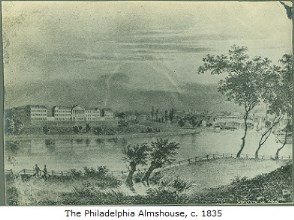
Image: The Philadelphia Almshouse (1835)
Later became Philadelphia General Hospital
Early nineteenth-century hospitals were built mainly in more populated sections of the country, generally in large cities. Nursing care in these institutions differed enormously. In hospitals operated by religious nursing orders, patients received high quality care. But, in other institutions, nursing care was more variable, ranging from good in some hospitals, to haphazard and poor in others.
Nurses in the War of 1812
During the War of 1812 (1812-1815), women were employed as military nurses, just as they had been during the American Revolution. Soldiers’ wives and townswomen near the battlfields were frequently hired by military hospitals to serve as nurses. Commodore Stephen Decatur’s ship’s log reveals the names Mary Allen and Mary Marshall, who worked as nurses on board Decatur’s ship United States on May 10, 1813. They were still on board when the ship sailed May 24, 1813.
Mary Ann Cole served the American Army as a hospital matron during the siege of Fort Erie, Ontario from July – October of 1814, during which 1,800 Americans were killed or wounded. As the Americans inside the fort tried desperately to hold out against British bombardment, Mary Ann went about her duties caring for those sick in the hospital, preparing their meals, dispensing medications and keeping medical records for the Regimental Surgeon.
The women who were allowed to remain in the military encampments during the War of 1812 were chosen by a lottery system. Only six wives were allowed in camp for every one hundred soldiers.
The women were employed as nurses, seamstresses and maids. If a woman’s husband died she had three to six months to greive, and then she had to find a new husband or leave the camp.
The Nurse Society
Recognizing the importance of good nursing care to a patient’s well-being, some physicians initiated courses for those interested in nursing. In 1798 Valentine Seaman, a New York physician, organized an early course of lectures for nurses who cared for maternity patients.
In the early nineteenth century, the Nurse Society of Philadelphia trained women in caring for mothers during childbirth and the postpartum period. Its founder, Dr. Joseph Warrington, a strong advocate of providing instruction for women interested in pursuing nursing as an occupation, authored a book entitled The Nurse’s Guide, Containing a Series of Instruction to Females who wish to Engage in the Important Business of Nursing Mother and Child in the Lying-In Chamber (1839).
The Nurse’s Guide, which each Nurse Society worker received, represents an early example of a nursing handbook. Between 1839 and 1850 the Nurse Society employed about fifty nurses, establishing an early practice of engaging nurses for care of patients in their homes.
The Civil War
The outbreak of the Civil War created an immediate need for capable nurses to care for the enormous number of sick and wounded. About 20,000 women and men served as nurses in both the North and the South. The commendable service rendered by Civil War nurses provided a rationale for future experiments in setting up training programs for nursing.
This is an excerpt from Nursing the Sick and the Training of Nurses, a speech given by Dr. Ann Preston, Dean of the Woman’s Medical College of Pennsylvania, in Philadelphia in 1863:
Among the many wants of society at this period, there is perhaps none more imperative, and none more inadequately supplied, than that of good nurses. The need is not only for a band of educated professional nurses, who shall be fitted to enter the sick homes of strangers… but also for that knowledge and training among women generally which may enable them to sooth and nurse into health their own beloved ones when smitten with disease.
Professional Nurse Education Begins
In 1862 the New England Hospital for Women and Children was founded by Dr. Marie Zakrzewska in Boston, Massachusetts – the first hospital staffed entirely by women physicians and surgeons. Through the years, the Hospital expanded into the complex that today consists of eight buildings near Columbus Avenue, a picturesque collection of Victorian Gothic, Stick Style and Classical Revival architecture.
There, in 1872, Dr. Zakrzewska opened the New England Hospital for Women and Children Training School for Nurses, the first professional nursing school in the US, with forty two students, but only four actually graduated. One of those graduates was Linda Richards, America’s first professionally trained nurse, who graduated in 1873 from the Training School for Nurses. The first professionally trained African American nurse, Mary Eliza Mahoney, graduated there in 1879.
Mary Eliza Mahoney
The first professionally trained African American nurse was Mary Eliza Mahoney. At the age of 18, she began by working at the New England Hospital for Women and Children. In 1878, at age 33, she was accepted in the Hospital’s Training School for Nurses, the first professional nursing program in the country. The training required 12 months in the medical, surgical and maternity wards; lectures and instruction by doctors on the ward; and four months of work as a private-duty nurse.
After graduation in 1879, Mahoney registered for work as a private-duty nurse. Families that employed Mahoney praised her calm and quiet efficiency. Her professionalism helped raise the status of all nurses. As her reputation spread, Mahoney received requests from patients as far away as New Jersey, Washington, DC and North Carolina.
Mahoney was one of the first black members of the organization that later became the American Nurses Association (ANA). When the ANA was slow to admit black nurses, Mahoney strongly supported the establishment of the National Association of Colored Graduate Nurses (NACGN), and she delivered the welcome address at that organization’s first annual convention in 1909.
In that speech, Mahoney recognized the inequalities in nursing education and called for a demonstration at the New England Hospital for Women and Children, in an effort to have more African American students admitted. The NACGN members responded by electing her association chaplain and giving her a lifetime membership.
During the ensuing years, Mahoney helped recruit nurses to join the Association. She was deeply concerned with women’s equality and a strong supporter of the movement to give women the right to vote. When that movement succeeded with the passage of the Nineteenth Amendment in 1920, she was among the first women in Boston to register to vote – at the age of 76.
Mahoney contracted breast cancer in 1923 and died in 1926. Her grave in Everett, Massachusetts is the site of national pilgrimages. In 1936, the NACGN established the Mary Mahoney Award to raise the status of black nurses. The number of African American women in nursing grew from about 2,400 in 1910 to almost 5,000 by 1930. The NACGN merged with the American Nurses Association in 1951, and Mahoney was inducted into the ANA Hall of Fame in 1976.
SOURCES
Armies Always Need Nurses
Early Years: American Revolution
History of Nursing Timeline: 1700-1869
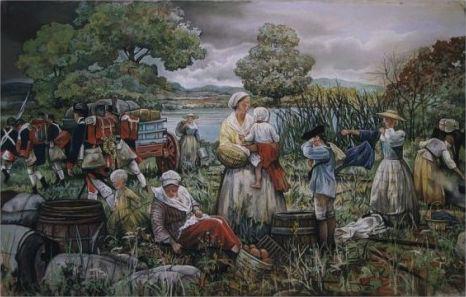
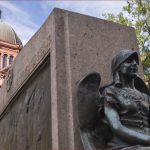
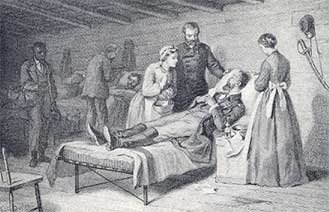

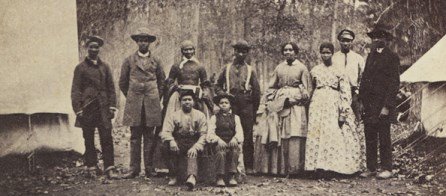
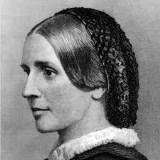
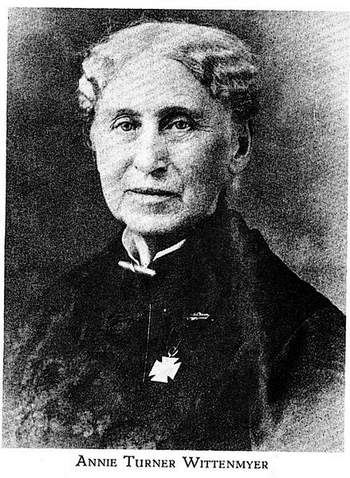
So incredibly interesting! I would be so curious as to what nurses if the late 1700’s wore? Was there a “uniform ” per se or would it have been just common dress for the time?